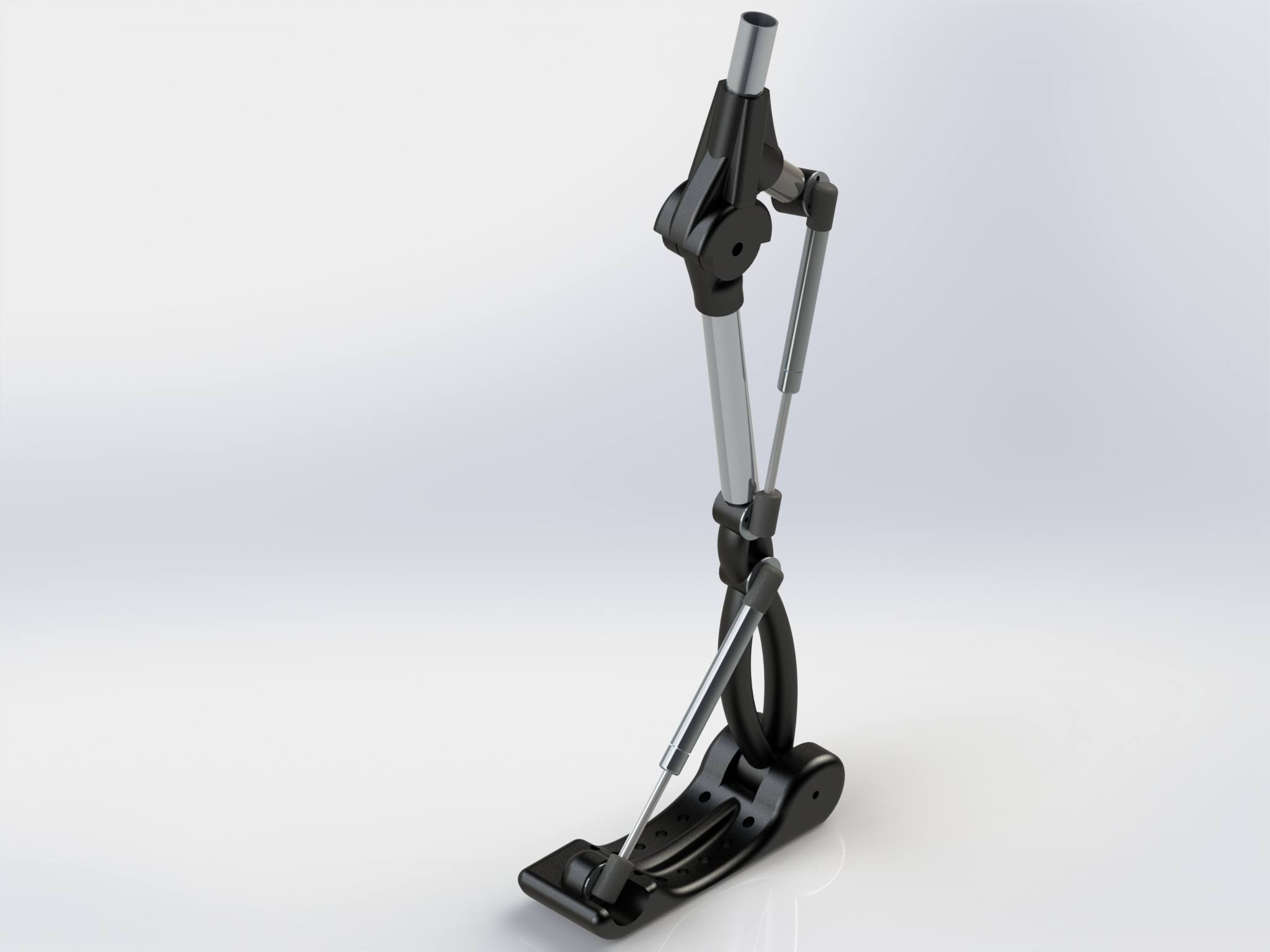Robohand Expands Prosthetic Options

Robohand’s latest work-in-progress, the Roboleg, will offer affordable mobility. Courtesy of Robohand.
Latest News
May 20, 2014
Marketing and salespeople love using buzzwords. They’ll casually throw out words like “optimization” or “leverage” to help sell the idea of whatever product they are offering. Preferred buzzwords vary by business, but the one you hear with fair regularity around additive manufacturing (AM) is “democratization.” That single word is meant to convey the power AM offers individuals to manufacture their own goods rather than relying on established means of production.
One particular area of AM to which democratization truly seems to apply is in the creation of low-cost prosthetics. Given the proper design and a standard material extrusion 3D printer (like those made by MakerBot) it is possible to build a prosthetic hand for the cost of a movie ticket, rather than the cost of a new car. Robohand was founded to provide people with the opportunity to experience the democratization of prosthetics.
 Robohand’s latest work-in-progress, the Roboleg, will offer affordable mobility. Courtesy of Robohand.
Robohand’s latest work-in-progress, the Roboleg, will offer affordable mobility. Courtesy of Robohand.As might be guessed from the name, Robohand began operations by designing prosthetic hands, and one of its first customers was co-founder Richard Van. Rapid Ready has previously covered Van’s search for a functional and low-cost prosthetic that led to his partnership with Ivan Owen. Their collaboration not only provided Van with his own prosthetic, but acted as a springboard to offering prosthetic hand designs for other handicapped individuals.
Van and Owen’s Robohand design was uploaded to Thingiverse for people everywhere to enjoy the benefits offered. Imagine knowing you’ve made a positive impact on people’s lives around the world. Most people would figure their work was done and move on to other projects. For Van and Owen, however, the Robohand was the catalyst that drove further innovation.
Along with hands, the duo also offers help with creating single fingers for individuals missing a digit. Called Robofingers, these prosthetics offer improved functionality over a stump, allowing users to return to activities they previously enjoyed. Users have been able to return to playing the guitar, typing on a keyboard, and to other activities that are made more difficult with the lack of one or more fingers.
The next member to the Robo family will be the Roboleg, a low-cost prosthetic leg design that uses a combination of 3D printed parts, pneumatic pumps, and metal tubes to create a functional and lightweight prosthetic. While the design hasn’t yet been released into the wilds of Thingiverse, it’s only a matter of time before even more individuals will enjoy improved mobility thanks to the Robohand team.
Below you’ll find a short video about a child who has benefited from Robohand’s generosity (and democratization).
Source: Robohand
Subscribe to our FREE magazine, FREE email newsletters or both!
Latest News
About the Author
John NewmanJohn Newman is a Digital Engineering contributor who focuses on 3D printing. Contact him via [email protected] and read his posts on Rapid Ready Technology.
Follow DERelated Topics






